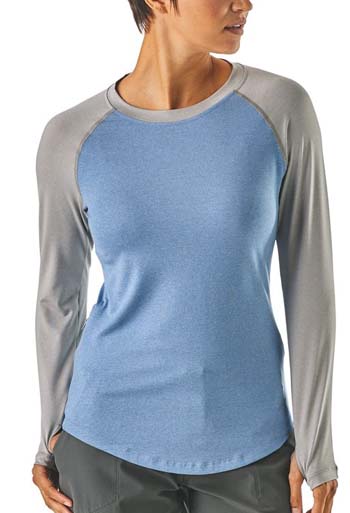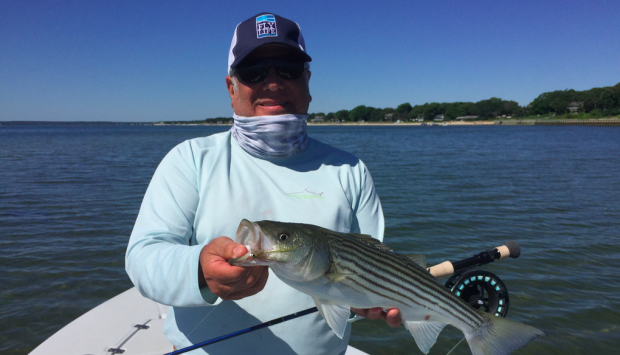Here are a few realities about your skin, the sun’s rays, and sunscreen
by Skip Clement
[dropcap]T[/dropcap]oday’s sunscreens are science-driven and offer much safer-longer skin care protection than just a dozen years ago. It is we, outdoor lovers, that are trapped in the past about the realities of skin care and the power of the sun’s rays.
There are three main types of UV rays:
- UVA rays age skin cells and can damage their DNA. These rays are linked to long-term skin damage such as wrinkles, but they are also thought to play a role in some skin cancers. Most tanning beds give off large amounts of UVA, which has been found to increase skin cancer risk.
- UVB rays have slightly more energy than UVA rays. They can damage skin cells’ DNA directly, and are the main rays that cause sunburns. They are also thought to cause most skin cancers.
- UVC rays have more energy than the other types of UV rays, but they don’t get through our atmosphere and are not in sunlight. They are not normally a cause of skin cancer.
• UVB rays cause sunburn and UVA rays cause wrinkles. Sunscreen can protect the skin from both UVA and UVB rays.
• UVA and UVB are both forms of ultraviolet (UV) light that can affect the skin after exposure.
• UVA light penetrates deep into the dermis (skin). Unprotected exposure to UVA rays can lead to skin aging, wrinkles, and a suppressed immune system.

Patagonia is an outdoor focused company. It’s entire clothes product line not only leads the industry with style, fit, comfort and durability, but skin protection via certified SPF ratings. They are also the first outdoor clothing company to acknowledge women are not just small men by making clothes FOR women. Click on image to visit site.
A few myths about your skin and the sun’s rays:
1. It’s an overcast day. I’m good. Yeah, right. Ultraviolet light is still harmful to exposed skin, no matter how much of it is exposed. Lower arms and face, for example. Anytime the body is exposed to light from the sun, it is exposed to UV rays.
2. Using sunscreen 100 percent of the time would prevent a person from getting the proper levels of vitamin D. Don’t believe that. The science – just 5 to 30 minutes of the sun create the needed amount of vitamin D in the body.
3. Sunscreen causes health problems. Yes, versions loaded with oxybenzone to test rats created health issues – no published studies that demonstrate toxic effects in humans caused by absorbed oxybenzone exist.
4. People with dark skin do not need sunscreen. WRONG. People with darker skin are not protected against skin cancer. Skin cancer survival rates were lowest in people with darker skin, including African-Americans, Asian-Americans, Native Americans, and Pacific Islanders.
5. Tanning beds provide a protective base tan. Pure BS. Exposing the body to high levels of UVA light from a tanning bed creates a temporary tan that will do very little to protect the skin from sun exposure and sunburns caused by UVB light.
6. Makeup is enough to protect the face. Dream on ladies.
In addition, wear a wide-brimmed hat and the best-polarized sunglasses you can afford
7. Sunscreen works better than covering up. Not even close. Try SPF (Sun Protection Factor) rated outdoor clothes. Covering up the skin is much better protection than sunscreen. A long-brimmed hat and clothing will protect the skin better than any sunscreen. Make sure you’re wearing a good pair of sun protective sunglasses. No angler would leave home without a great pair of polarized glasses.
8. You cannot tan while wearing sunscreen. Think again. Sunscreen only Helps. To avoid getting there – keep applying sunscreen and cover up with a hat and long clothing.
9. All sunscreen is the same. Sure, just like all food tastes the same. The other important consideration is the (SPF). The United States Food & Drug Administration (FDA) recommends regularly applying a sunscreen with an SPF of 15 or higher, even on cloudy days.
10. One application of sunscreen lasts all day. Sorry Charlie, reapply – think a couple of hours, four at most.
11. Sunscreen is waterproof. Sure it is – read the labels. It can be resistant – best if you apply at least 20 minutes before activity or having a dip.
Sources: American Cancer Society – Ultraviolet Radiation, Costa Del Mar Sun Glasses, and the Skin Cancer Foundation.


